How do shot selection and lighting help “Concussion” tell its story?
When a film character is introduced in a dimly-lit room or washed in the shadows of darkness, it’s a safe bet they are going to provide opposition to the film’s protagonist. Film lighting does much more than give us the ability to see what is being performed. Used in innovative ways, lighting can use its understated power to enhance or even become a performance in its own right, aiding narrative, contributing to emotional effect, and developing characters in subliminal ways.
“I pay a lot of attention to lighting and set decoration and production design to help tell the story in a parallel way.” - Concussion (2015) director Peter Landesman, speaking to Collider.
“If Bennett (Will Smith) is feeling the full force of not just his paranoia, but actual challenge, and he’s feeling threatened, I’d like the lighting design to reflect that. The external reflects the internal, so the audience feels like they’re immersed in that and can feel like it’s happening to them as well.”
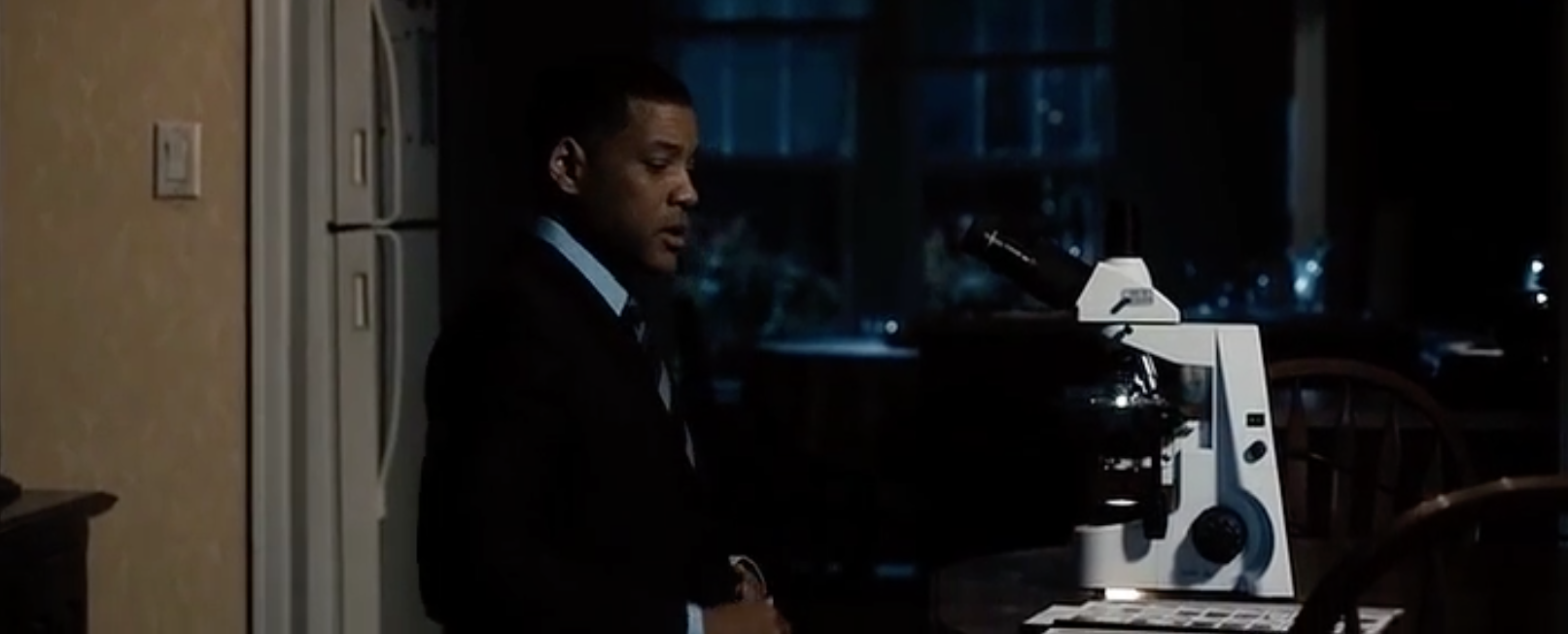
Early in the film, we are granted insight into Bennett’s home life. A talented and intelligent medical researcher, he is also a regimented, religious, and specific man. His home is orderly and looks as if it’s barely lived-in—a somewhat cold and empty place, despite Bennett’s apparent comfort within. He doesn’t seem aware of the comforts he denies himself at this point.
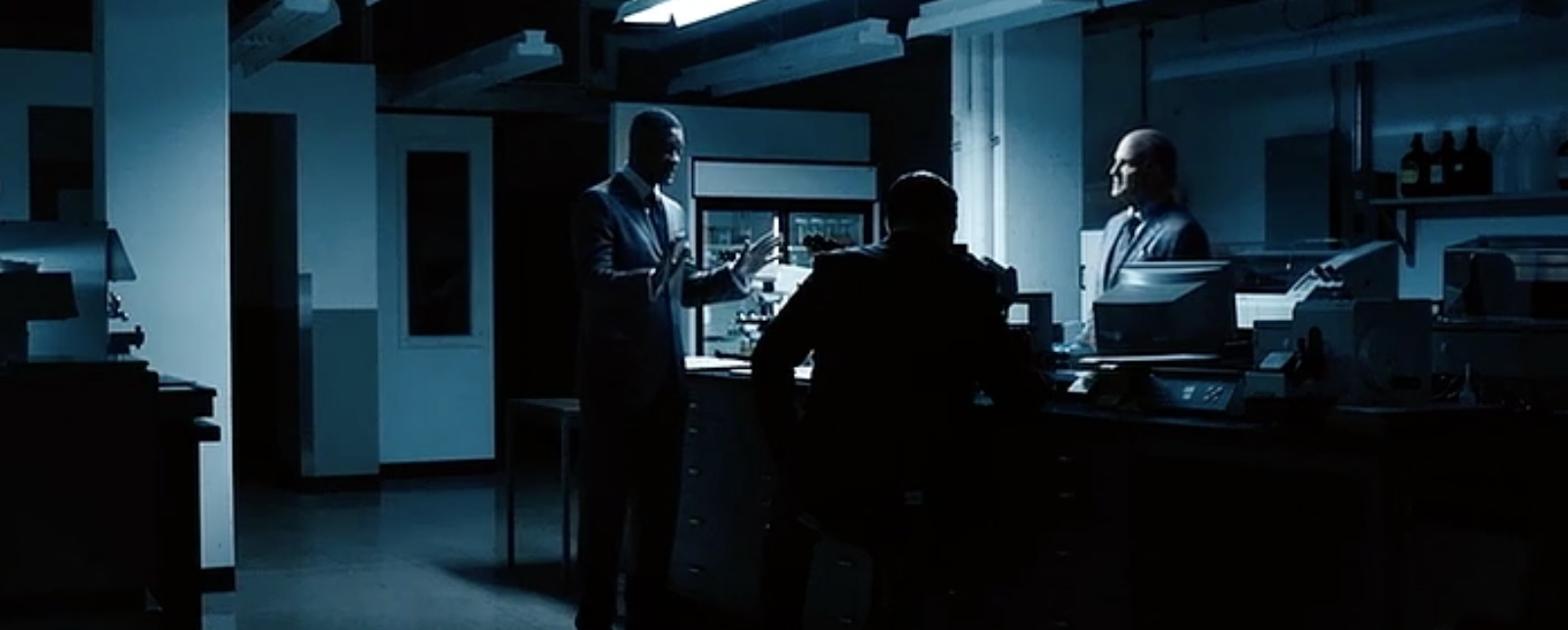
An early example of mood lighting mentioned by Landesman is seen above. The sharp and harsh edges of a medical facility are amplified by the crass fluorescent light and blue tints. Within, the men are discussing the newly-discovered science and the implications it would have with the NFL.
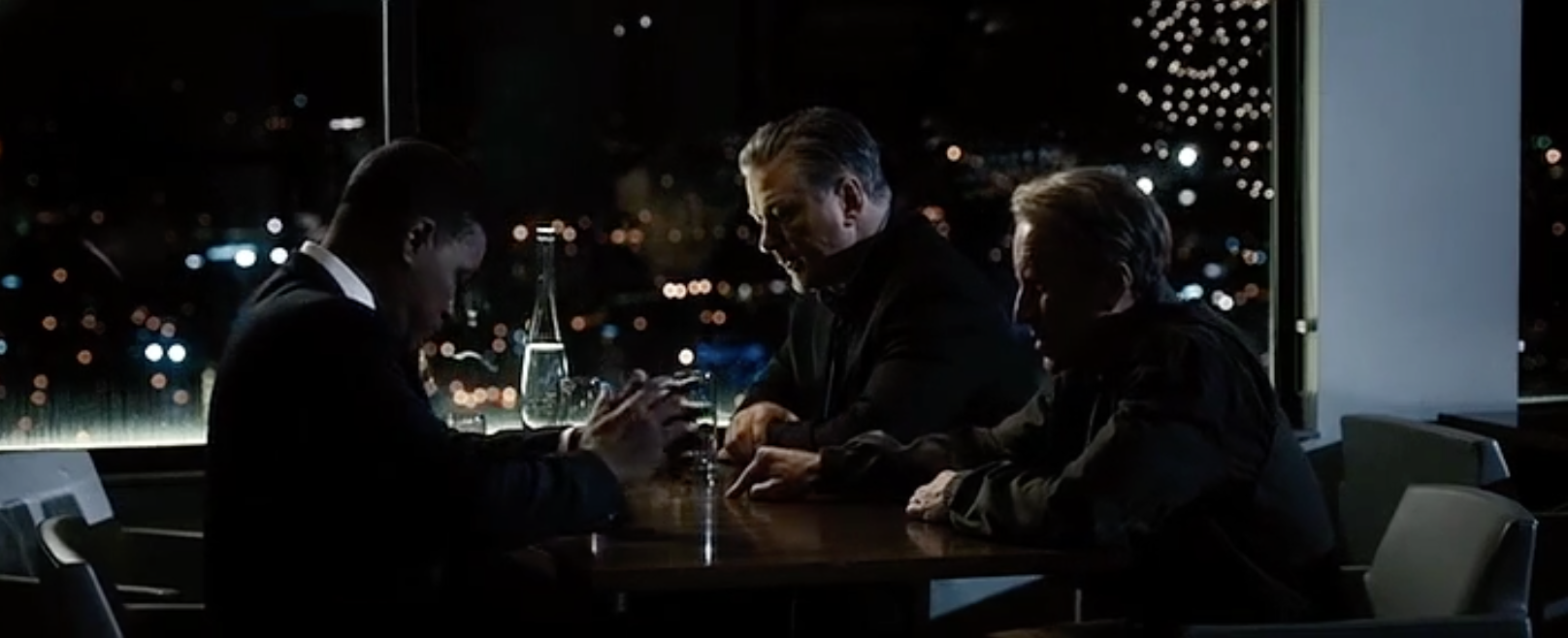
Pittsburgh Steelers team neurosurgeon Dr. Joseph Maroon (professor and vice chairman of the Department of Neurological Surgery at the University of Pittsburgh Medical Center, played by Arliss Howard) is one such character introduced in shadows. In Concussion, he speaks on the side of the NFL, warning Bennett Omalu of the backlash he will face from the organization if he tries to push his concussion-based research on the public. Although Dr. Julian Bailes (Alec Baldwin) is on Omalu’s side, he sits beside his colleague Maroon at the table, amplifying the dramatic tension and exaggerating Omalu’s “fight” as a David vs. Goliath, lone man vs. huge organization parallel.
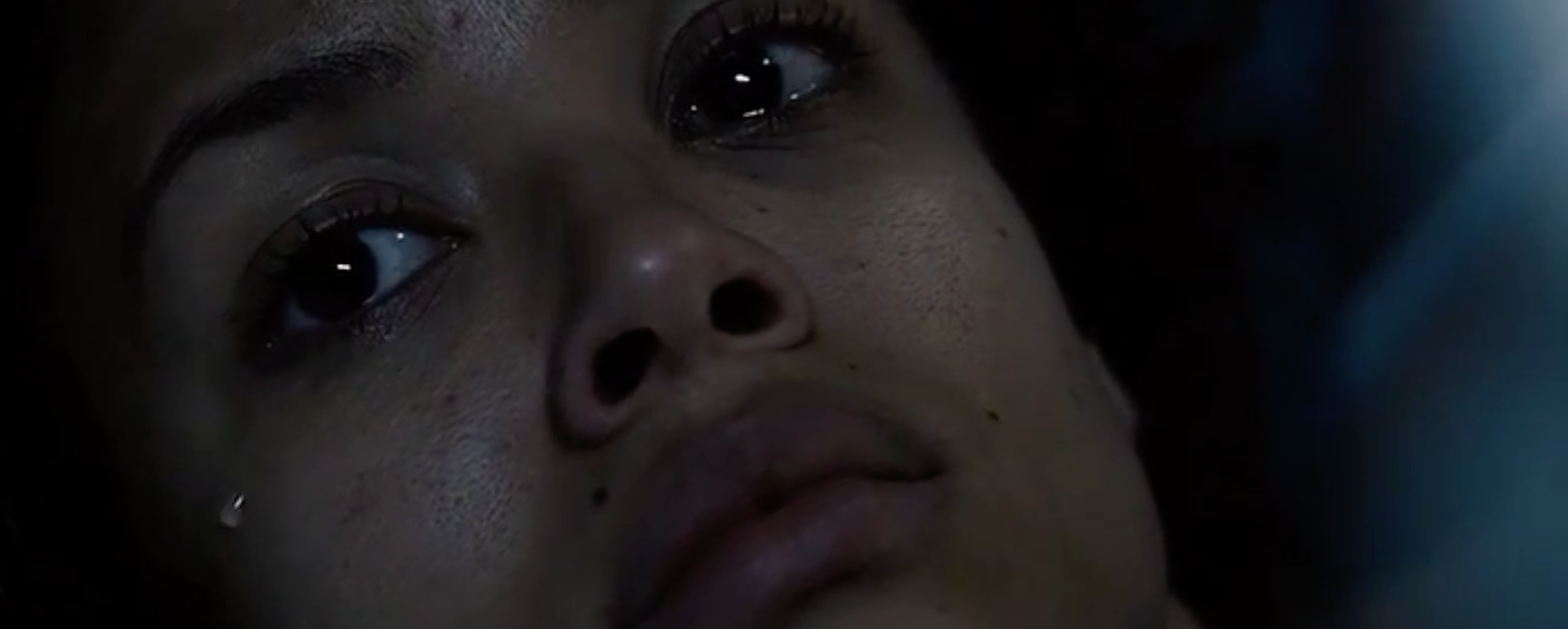
We see the same dark-emphasis lighting in a scene between Omalu and his roommate-turned-girlfriend-turned-wife Prema (Gugu Mbatha-Raw), as the couple learns their child has been lost in utero.
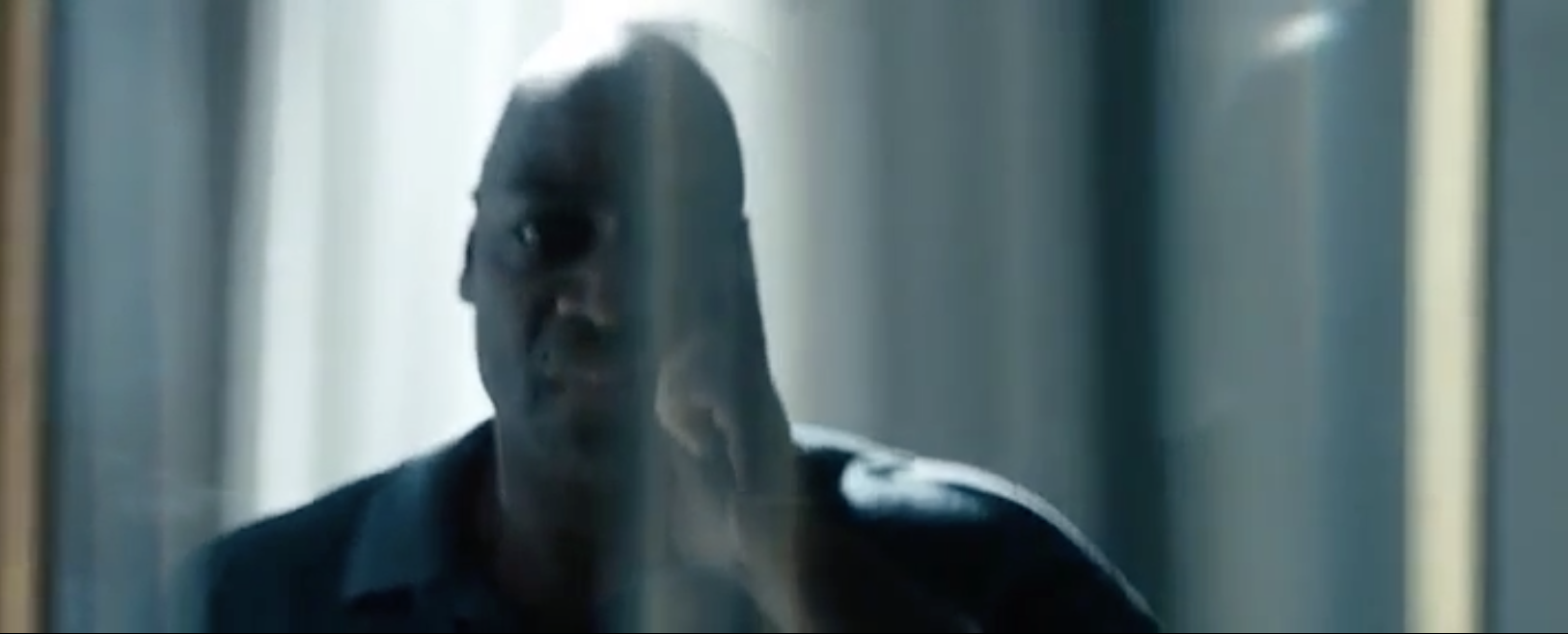
Shooting through this pane of glass distorted the image of an ex-NFL player suffering the mental traumas of CTE. The image becomes blurry and interrupted, mirroring the confused nature of the player’s mind. He is never seen clearly in the shot.
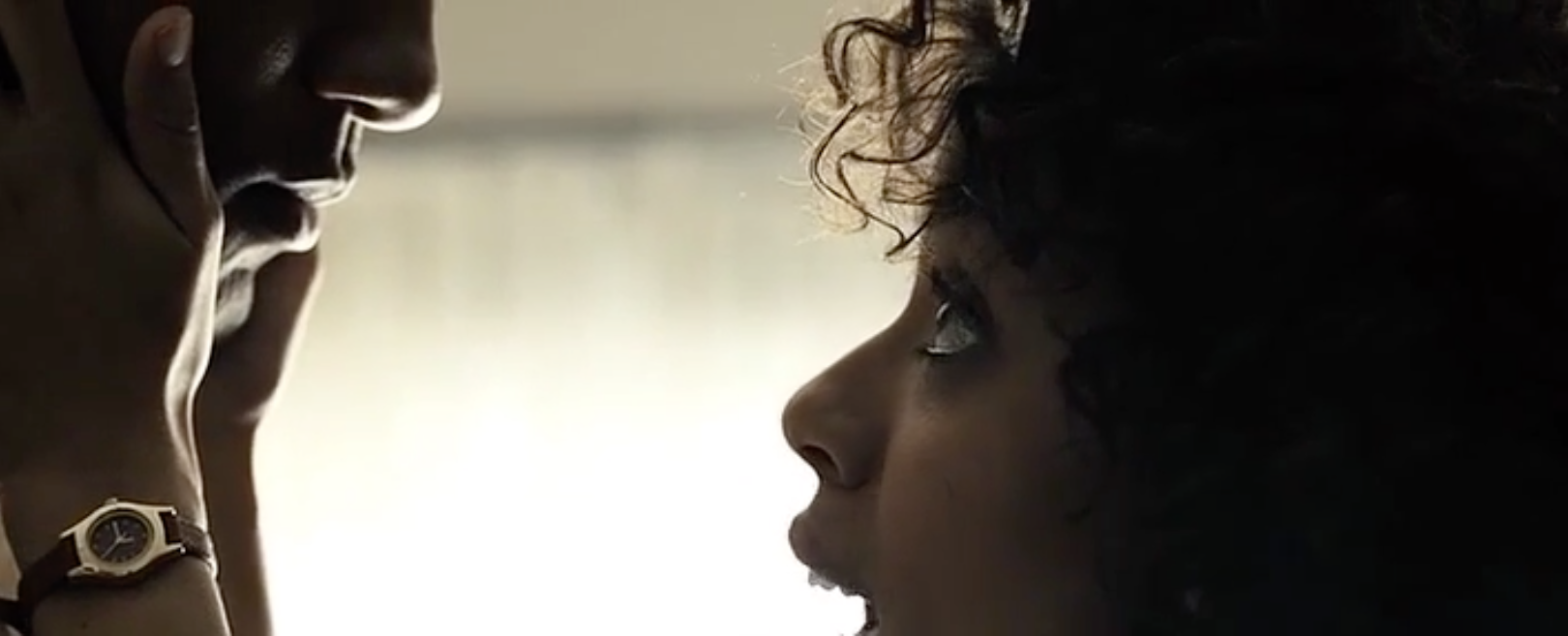
A contrast—in one of the film’s last scenes, years into the story and following the NFL’s concession that Omalu’s research has scientific merit, Prima offers encouragement before Bennett gives a speech to the NFL Players Association. The speech is, essentially, the climactic peak the narrative has been building towards, and its appearance is basked in positive light, framed by the embrace of the story’s romantic characters.
Much of Concussion’s dramatic weight lives in the material and its presentation of the details. Landesman strives to boost each scene through keen use of lighting and set decoration that reflects the subject at hand.

